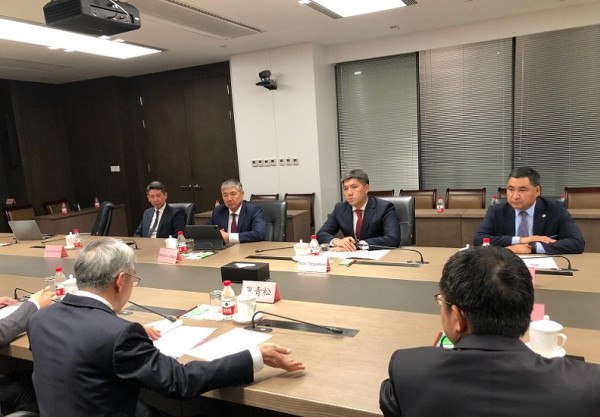BISHKEK (TCA) — Many action plans, economic development programs and projects have been adopted in Kyrgyzstan but most of them have had no effect. Of 33 programs planned for this year, only 22 (66%) have been drafted, Economy Minister Arzybek Kojoshev said at a Government meeting on May 25.
A program for priority sectors of the economy has not been developed yet except for the textile and clothing industry, although the priority sectors also include metallurgy, food processing, and production of construction materials.
The processing industry development program has not achieved its goals to ensure production growth and competitiveness in the Eurasian Economic Union (EEU) markets, to create jobs, protect local producers, and develop the domestic market.
On the contrary, there was a significant reduction in many sectors of the economy. There was a 9.8% decrease in industrial output in 2014 instead of the planned 7.9% growth. The most significant reduction of all economy indicators was last year, when the deviation from the plan reached 22.4%, Kojoshev said.
When developing programs, the government did not take into account the current problems including decreasing solvency of the population and inability to finance technological renovation of production by private business. There are also new factors affecting the economy including the crisis in the construction industry and growing imports from Kazakhstan and other EEU countries.
Disappointing results
According to the National Statistics Committee of Kyrgyzstan, industrial production decreased by 26.9% from January to April 2016 compared to the same period of 2015. The decline was mainly due to the reduced production of gold at the Kumtor mine (by 45.5%) and decreased textile production (by 46.6%). Production of other non-metallic mineral products decreased by 23.7%, production of clothing by 13%, electricity generation, transmission and distribution decreased by 15.2%.
Kyrgyzstan’s exports reduced by 25.8% due to a six-fold reduction in the export of meat and four-fold reduction in fruit exports. The export of milk and dairy products decreased by 40% and cotton twofold.
The import of transport vehicles, pharmaceutical products and lubricating petroleum oils also decreased — almost twofold — during the period.
New tasks
Prime Minister Sooronbai Jeenbekov ordered the Economy Ministry to draft an industrialization program for the development of priority industrial sectors with regard to Kyrgyzstan’s membership of the EEU before December 1, 2016.
A program for revival of large idle industrial enterprises should be developed by August 1.
By October 1, the Economy Ministry should also update the current action plan taking into account the current situation and Kyrgyzstan’s membership of the EEU.
Restrictive measures
Inflation in Kyrgyzstan has grown mainly due to the national currency devaluation. The National Bank of the Kyrgyz Republic (NBKR), on one hand, has reduced the amount of soms in circulation, while, on the other hand, promoted prohibitive measures pursuing de-dollarization of the economy. Some experts believe such NBKR policy does not improve the situation but creates a vicious circle.
Prohibitive measures further aggravate the problem, and copying the Tajik way to solve the problem of dollarization only promises a temporary improvement, which will later result in an even more significant deterioration of the situation.
Kyrgyzstan now spends large amounts of foreign currency on imports but earns little foreign currency by export, so the deficit has to be covered at the expense of the state forex reserves.
National debt
Kyrgyzstan has recently adopted a Budget Code which consists of a set of laws relating to the control and management of public finances. According to the Code, the Government will determine the amount of the national debt in accordance with international indicators of debt sustainability.
The Budget Code defines a norm according to which draft laws on changes to financial obligations of the state and increase in budget expenditures should be adopted only with the Government’s approval. This will prevent adoption of legislative acts not supported by financial resources.
The Finance Ministry proposed excluding from the Law “On the state external debt” the provision according to which the country’s external debt should not exceed 60% of GDP. The proposal has been approved by Parliament. As of March 31, Kyrgyzstan’s external debt was 60.3% of the country GDP for 2015.









